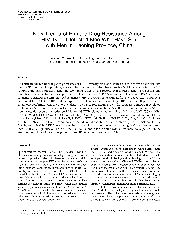摘要
To elucidate the recent changes in prevalence of HIV-1 primary resistance mutations in men who have sex with men (MSM) in Liaoning province, 217 samples from antiretroviral therapy-naive MSM were collected. For 201 samples, the entire protease gene and 256 amino acids of the reverse transcriptase gene were successfully amplified by reverse transcriptase polymerase chain reaction (RT-PCR) and nested PCR of viral RNA and were sequenced. Among the amplified pol sequences, HIV-1 CRF01_AE accounted for 87.6% (176/201), subtype B accounted for 8.0% (16/201), and subtype CRF07_BC accounted for 4.5% (9/201). The overall prevalence of mutations conferring resistance to any drug was 4.5%, representing 4.5% for protease inhibitor (PI)-related mutations, 0.5% for nucleoside/nucleotide reverse transcriptase inhibitor (NRTI)-related mutations, and 0.5% for nonnucleoside reverse transcriptase inhibitor (NNRTI)-related mutations. Included were V32I (0.5%), M46I (2.0%), L90M (2.0%), T215C (0.5%), and Y188L (0.5%). Only one case carried resistance mutations to all three drug classes (L90M, L10I, and A71T to PI; T215C to NRTI; and Y188L to NNRTI). L10I (4.5%), V118I/IV (17.4%), and K103R/KR (10.0%) were commonly observed mutations, but do not confer any drug resistance to PIs, NRTIs, and NNRTIs. CRF01_AE is becoming a major HIV-1 infection subtype among MSM of Liaoning province. Relatively high rates of HIV drug-resistant mutations to PIs in antiretroviral treatment-naive patients in the study represent a serious challenge for future HIV treatment programs in China.
- 出版日期2011-10
- 单位中国医科大学
